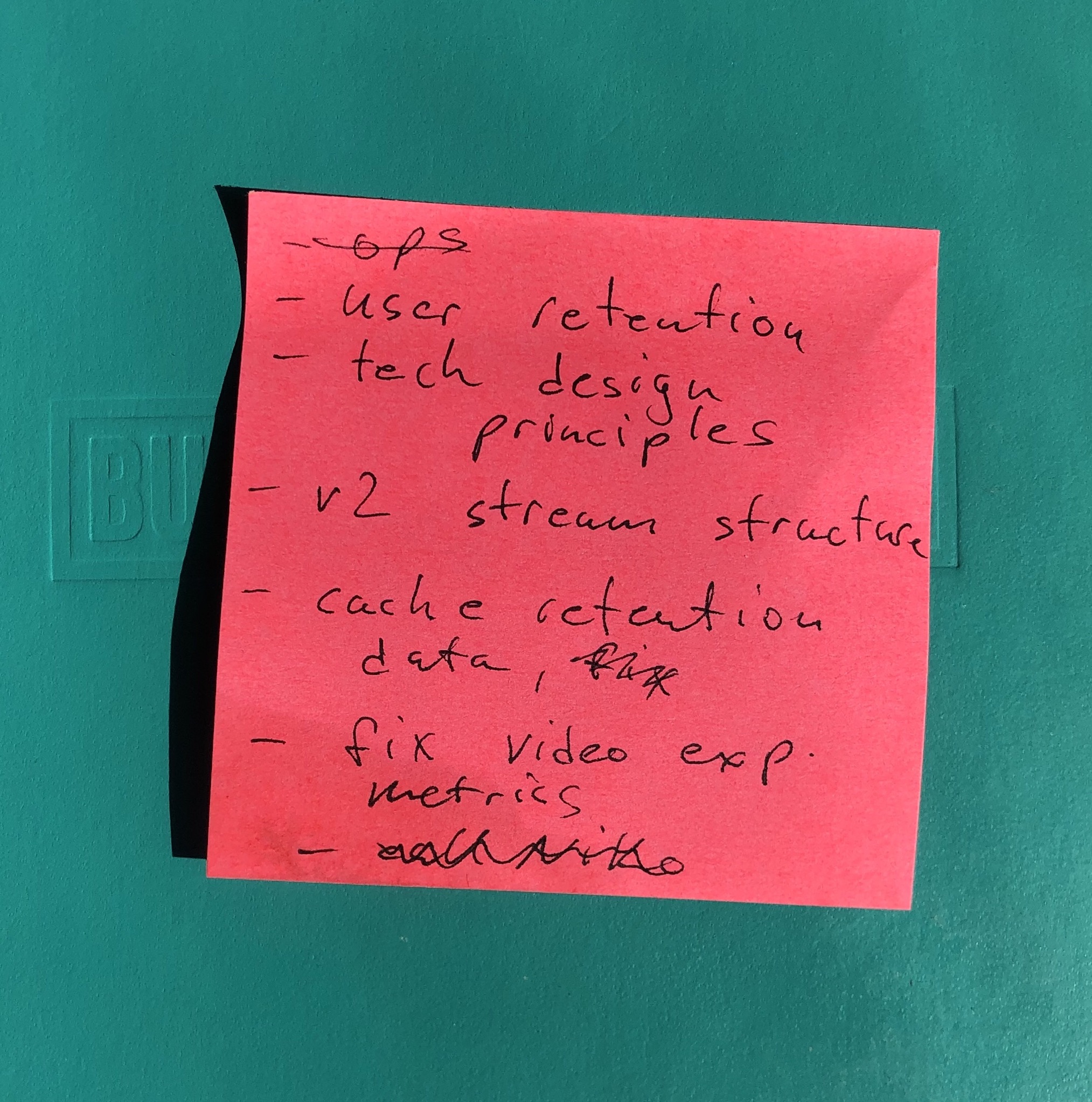The last few months have turned just about everyone into a work-from-homer. For many, it’s new, exciting, and probably somewhat stressful. For me, it’s been my life for over a decade. Ever since I left my job as a Navy scientist to live in startup land, I’ve been dealing with the ups and downs of working at home.
It took me several years to figure out the right way to be sane and productive from home. The details of my approach changed, but the broad strokes remain the same: a strict separation between “work” and “home”, discipline, and regularly reviewing your processes to make sure they’re still working for you.
Stage 1: The Honeymoon
The first pitfall of working from home is that you end up half-working and half-home.

Once you get through the first week or two of “how does this work”, WFH is awesome. There’s no time wasted commuting so you can sleep in. You’re in the comfort of your living room (or bedroom, or front porch, wherever!). You’re free and in charge and it’s awesome.
At least that’s how it can feel, especially if you’re on a manager’s schedule. For a writer, software engineer, or anyone who needs large chunks of uninterrupted time, you’ll find that the temptations of home life will destroy those precious chunks if you let them.
That’s exactly what happened to me. If I stayed out late with friends the night before, I’d do a short day. If the weather was nice, I’d go outside for a quick workout or some frisbee. “What’s so bad about that?” you might ask. It’s not bad, as long as you do it mindfully and it’s part of your plan. If you do it too often, however, it starts to chip away at the time you’d like to spend working.
The solution I landed on was to have a “going to work” routine that involves actually leaving your house. If I wanted to start work at 9, I’d walk out the door at 8:55 and walk clockwise around the block. As I walked, I’d mentally go over what I wanted to get done that day and what I’d start with. By the time I got back to my front door, I’d be ready to sit down and crank out code. And by having a fixed start time and routine, it was harder to “just five more minutes” myself into wasting time till noon.
Stage 2: Overdoing It
As I got better and better at focusing on work, I started to see work as the default way of being. In our always-on world, it’s very easy to squeeze in little bits of work here and there. A quick Slack checkin before rolling out of bed, a burst of emails during breakfast, a bit of writing after dinner, and suddenly your work is taking over your whole day. I lived in this mode for years.
You can tell you’re stuck here if you go to bed at night frustrated by how much time you spent “working” and how little you actually accomplished.
Instead, I recommend a mirror of the “go to work” routine - a “leave work” routine. First, grab some paper and write down everything that’s on your mind related to work. Getting it written down and knowing that it’ll be handled will keep you from ruminating on it. When you come back to work tomorrow, your note will be the first thing you’ll see and you’ll pick up right where you left off.
 I like to use Post-Its. They keep me brief and focused.
I like to use Post-Its. They keep me brief and focused.
Now leave the house and walk counter-clockwise back home. Once you’re back, forbid yourself from doing even a little bit of work. Stay off Slack, hide your work email, and relax.
Stage 3: The Middle Path
Ironically, limiting my work time forced me to prioritize better. Now that I only had so many hours of work in a day, doing everything was no longer possible (honestly it was never possible, but now I was aware of that). So I had to eke as much out of each hour as I could. Once again, simple limits are the answer.
Set aside a work-only zone, a place where you physically go that you only use for work. Ideally this would be a room that’s comfortable, distraction-free, and not used for anything else. But it doesn’t have to be. It could be a particular chair and a pair of headphones, or even a spot in the park under at tree. What’s crucial is that once you’re there, you’re “at work”. No shopping online for groceries, no reading for fun. Tell everyone in your life that when you’re here, you’re working.
Finally, spend some time each week reviewing your process. What I outlined is just the starting point. Take some time to think about what’s working for you and what isn’t. There are no absolutes, and my process won’t solve all your problems. Only you can do that.
Research your own experience. Absorb what is useful, reject what is useless, add what is essentially your own. - Bruce Lee
Just like twitter, working from home can be a huge plus, but only if you make a conscious effort. Don’t just wing it. Make an effort to set up good habits for yourself. You’ll thank me later.